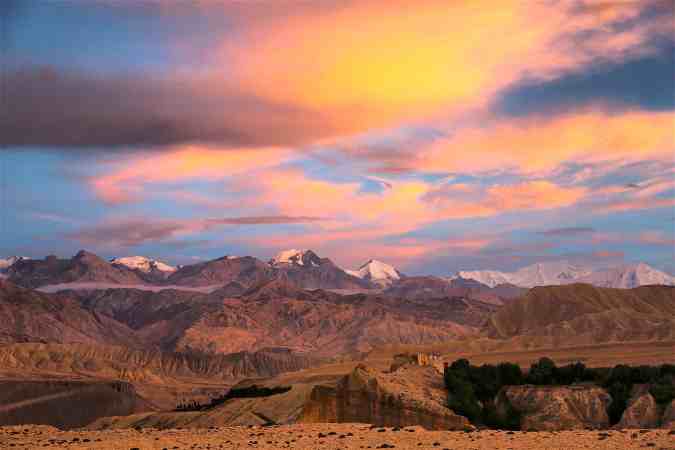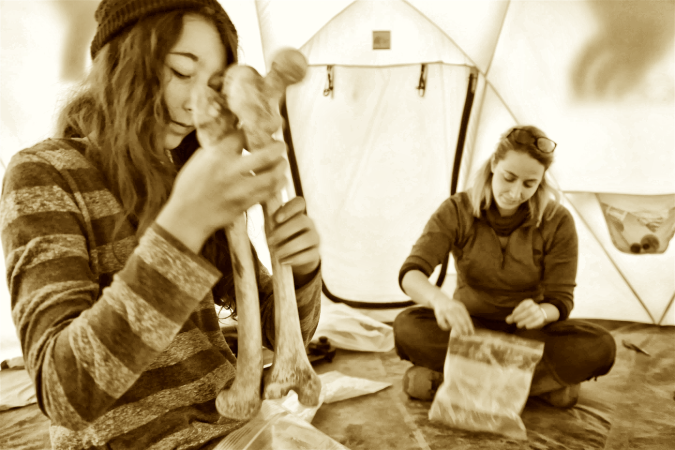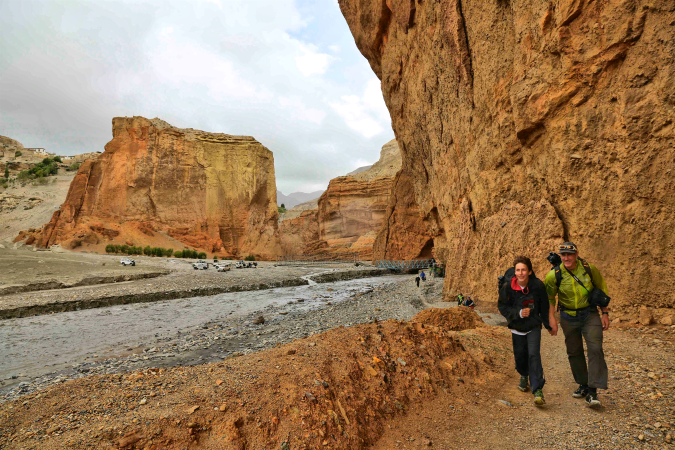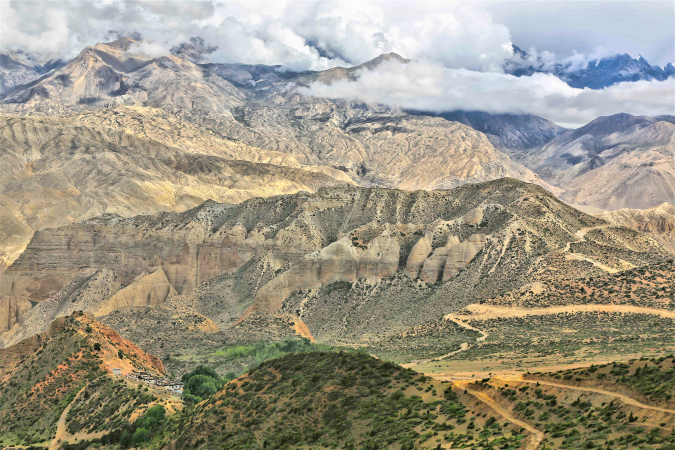In Upper Mustang, Nepal, there is an ethic of reuse that has changed my ways. Few things are consumed and then simply thrown away, except for candy wrappers, plastic packaging like biscuit wrappers, ramen noodle packets, and plastic bags holding washing powder. These, sadly, are found underfoot in nearly every village.
Plastic Packaging Used for Irrigation:
But most plastics in Mustang are put to use in innovative ways. Take the plastic lining for water diversion in irrigation ditches. Rather than using jute sacks filled with sand, a readily available material is plastic packaging and bags layered with mud, unwanted clothing and textiles to create an impermeable dam for irrigation ditches. The plastics, unfortunately, often break free and are carried downstream into the Kali Gandaki River where all water flows.
Potato Sack Turned Horse Feed-Bucket:
One of the most innovative Mustang-style trash hacks is the method by which local horses are fed their grain. Potato sacks made of woven plastic are sewn into a configuration that fits easily around a horse’s muzzle, with long string handles that hang over the horses’ ears. Corn is measured out and put in the potato-sack-turned-feed-bag, the chaff blown by hand from the corn to prevent the horse from inhaling it in the bag, and the bag is hung from the horse’s ears: a muzzle feeder that’s a brilliant light-weight way to feed one’s horses while traveling. No need for heavy buckets. Whether on-the-go or at home, these muzzle feed bags are the preferred feeding bucket for Mustang equines.
When one becomes worn out and a hole develops, they’re quickly patched up, as this one was mended by a talented tailor friend in the village of Samdzong, utilizing his son’s worn out sweat pants.
I grew up with horses and we went through plenty of buckets, some made of PVC and plastic which when broken became yet another hefty item in the landfill. The potato/rice sacks turned into horse feed bags are one of the best reuses I’ve ever seen in a remote part of the world that could easily be adopted world-wide!
Planted Pots in Buckets, Paint Cans and Tins:
Anything that is a receptacle is used in Mustang until it can no longer hold anything, disintegrated by sun and wind to the point of uselessness. In the topmost photo of planters, below, you’ll see a plastic bucket that developed a crack and was then sewn back together with plastic twine. Potted flowering succulents are such a valuable addition of organic color to a household, taking the time to repair that heavy-duty plastic pot is clearly worth the effort. If we treated our own plastic pots and buckets the same way, there’d be a significant reduction in the production of these plastics in the first place, and a renewed ethic which the Lobas, the people of Upper Mustang, haven’t lost, of repairing everything again and again until its useful life is truly over. Now that’s reuse!














